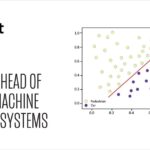I spent many years implementing financial systems in the early part of my career, helping finance departments move from largely paper-based processes with day books and ledgers to what were, at the time, modern technologies that allowed for the electronic capture of transactions and data entry, such as general ledger journals, payables invoices, receivable receipts and payments.
These early finance systems, although based on manual tasks, enabled multiple finance team members to work concurrently on recording financial transactions. They were undoubtedly more efficient in capturing transactions through computer-based input screens than handwritten records.
As technology advanced, integrated ledgers enabled capturing a single transaction that updated sub-ledgers in real time, reducing the manual effort required to record financial transactions. There was a further evolution when ERP systems like SAP arrived, which automatically recorded the financial impact of transactions from business activities as they occurred.
Did ERP cause finance to lose control of the general ledger?
Despite the ERP revolution’s positive impact on efficiency in record-to-report (R2R) processes, many finance teams discovered that their colleagues in sales, procurement and other departments were making errors when recording their activities. These errors, such as incorrect prices or units of measure, had a significant financial impact and created a need to correct and adjust recorded activities daily. Internal controls became even more important in maintaining the integrity of financial data.
Ironically, after the widespread adoption of ERP systems, the workload for finance teams increased, and they spent a large amount of their time on activities like:
- Maintaining the integrity of the financial records through an account reconciliation process
- Validating key metrics such as sales, gross margin and stock levels to highlight potential errors
- Operating internal control procedures to identify data and process issues
- Adjusting for errors, accruals, provisions and financial reclassifications
- Recording day-to-day transactions, including intercompany accounting records
- The month-end financial close, including preparing financial statements
- Ad-hoc financial reporting
Why ERP systems created a need for R2R automation
In response to the additional work required within the accounting team and the need to increase efficiency, software vendors developed hundreds of ERP add-ons to tackle the automation of specific pain points. Solutions ranged from spreadsheet integration for recording journal entries and standalone reconciliation tools to scripting technologies that captured a user’s keystrokes.
However, none of these automation solutions focused on the need to streamline R2R workflows or end-to-end process automation, nor how to improve and speed up the financial close process, which was still the single most significant and resource-hungry responsibility of the finance team. It’s reasonable to question whether these automation solutions delivered on their promise of greater efficiency and control.
To understand the gap between automation perception and reality in finance, Redwood Software commissioned independent R2R research with SSON Research & Analytics. The findings, which I’ll summarize below, were enlightening.
How important is R2R automation?
91% of finance leaders agree that R2R automation is critical to the efficiency of their finance processes, but only 58% of those surveyed have automated at least one key process in their finance operations.
This signals a pressing need for organizations to prioritize and invest in automation solutions, which directly contrasts the slow pace of adoption that’s likely hindering growth and competitiveness for far too many organizations.
Why such low levels of R2R automation adoption?
Respondents noted that the barriers preventing their wider adoption and expansion of R2R automation include a lack of integration with legacy systems, the complexity of the automation tools used, limited knowledge of what’s achievable and a lack of senior sponsorship for the automation strategy.
Some of the key questions this raises are:
- Does automation need to be part of a broader finance transformation initiative to deliver success? By focusing on the automation aspects alone, the wider end-to-end process transformation opportunity and benefits will be missed.
- How does the particular automation technology impact the level of automation achievable? Automation tools with limited functionality inevitably limit the level of digital transformation you can reach.
- How do you develop a compelling business case for R2R process automation? A clear approach and strategy to deliver R2R automation should include a clear and deliverable business case. This is crucial to enable R2R to expand quickly in the future.
- Is integration between automation tools and legacy systems critical to deliver meaningful R2R automation? Without fluid integration, R2R automation tools cannot easily and reliably access your ERP system’s functionality and financial data to deliver robust automated financial processes.
- Would stronger leadership alone have resulted in higher automation adoption levels? R2R automation delivers positive change within the finance function. To overcome natural human resistance to change, finance leaders need to bring the team on the automation journey with them to ensure they adopt new ways of working and positively view changes to their roles.
What questions does this research surface for you? Read the full report to explore more.
The gap between reality and opportunity
In five core areas of R2R, the low level of automation many organizations realize highlights how little has been achieved around automation in finance so far, despite single-focus niche automation tools in areas such as account reconciliations, month-end close management and journal entry processing.
The barriers preventing more wide-scale adoption of R2R automation mirror those found in many technology-led business transformation initiatives. However, in the case of R2R automation, the issues are exacerbated because many of the technologies are point solutions that focus on automating one thing, such as reconciliations, intercompany or journal entries. This dictates a style of implementation that does not consider the big picture.
What other factors contribute to the gap between automation suitability and the level of automation organizations have achieved?
Additional manual effort
Point solutions for automating specific areas of R2R can, in theory, be deployed quickly and cost-effectively due to their focused scale and scope. Problems arise when these solutions are surrounded by adjacent manual processes that require complex hand-offs, handovers and workarounds between finance staff and the technology.
For example, journal entry automation tools require manual input of financial transaction data into spreadsheets and forms, which the automation tool uploads to the ERP general ledger as journal entries. Should these journals be subsequently rejected due to validation errors, account blocking rules or security controls, finance staff will be notified and have to investigate and resubmit the journal within the automation tool. This requires much more manual effort than if they had input the journal entry directly to the general ledger in the first place.
Lack of scalability
Automation tools can also have inherent transaction and volume processing limits that prevent them from being more widely implemented. When discovered during implementation, such limitations reduce the achievable automation level and damage the business case ROI, jeopardizing further investment in automation.
Imperfect or unavailable integration
When organizations implement multiple automation tools from different vendors, it becomes almost impossible to interconnect them to create end-to-end automated processes. A reconciliation tool from vendor A cannot readily talk to a journal entry tool from vendor B. When the reconciliation tool identifies an adjustment for posting to the general ledger, the journal entry tool cannot automate this transaction, so manual intervention is required.
Multi-vendor approaches limit process transparency, resulting in delays and latency, with tasks in manual work queues awaiting processing.
Limited automation capabilities
Several so-called automation tools simply replicate manual tasks. An example of this is the month-end close checklist. Spreadsheets have often been the mainstay of the closing checklist, with finance teams manually marking tasks off as they complete them to summarize the outstanding month-end close activities. Some close management tools mirror the role of the spreadsheet in the month-end close, providing minimal automation benefits to finance.
The way forward
An integrated R2R automation platform solves many of the issues and challenges highlighted above, taking the best capabilities of the many automation point solutions available in the market, like journal entries, month-end close checklist, intercompany and reconciliations, and combining them with an end-to-end approach to control and monitor your processes.To learn more about the gap between automation perception and reality in finance, see more fascinating stats about the state of R2R automation among organizations like yours and find out how to step into the new era of finance automation, get your free copy of the full report.


























